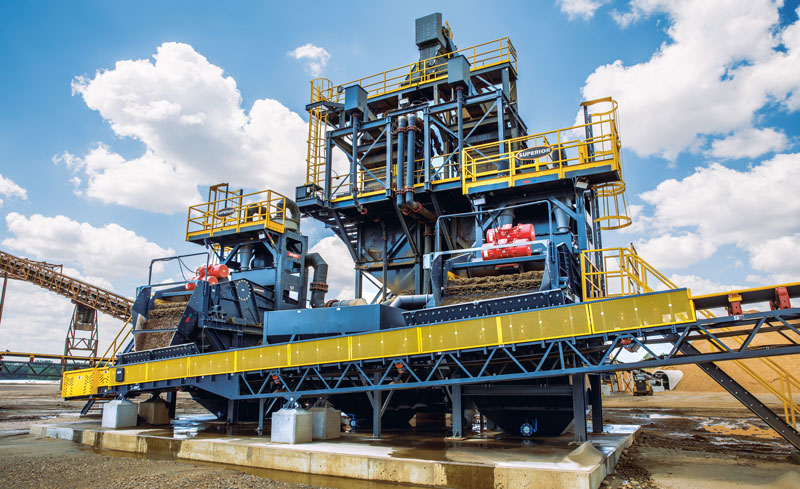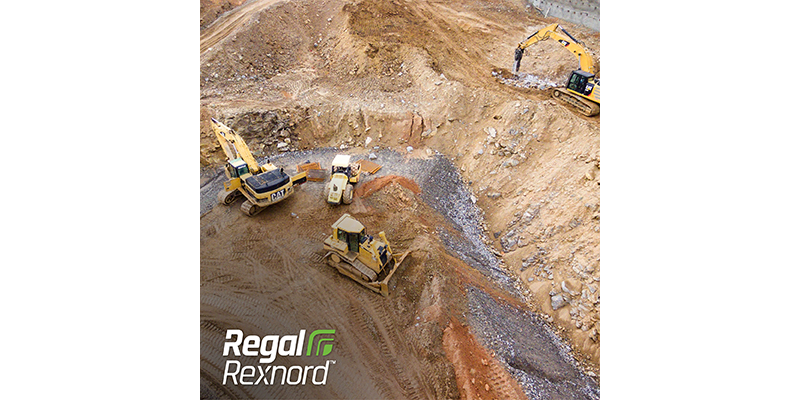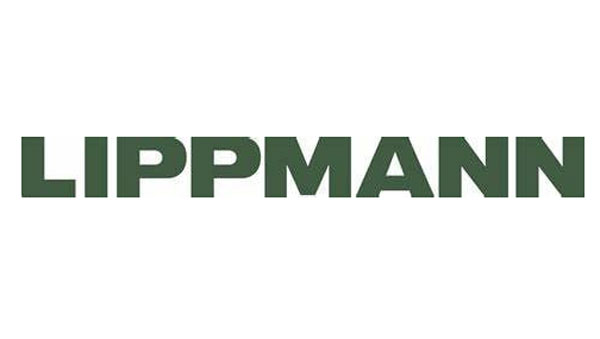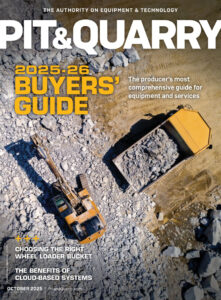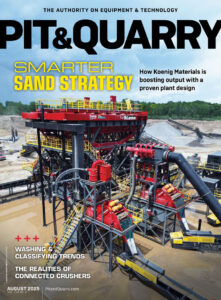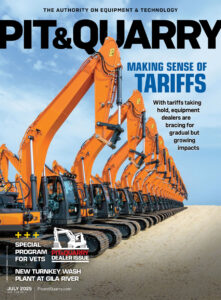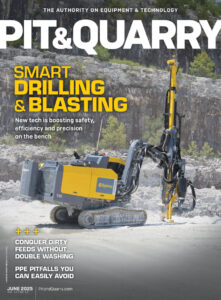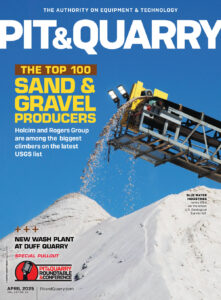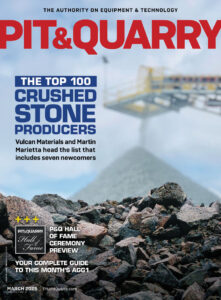John Bennington, product manager for washing and classifying equipment at Superior Industries, visited with Pit & Quarry to discuss the latest trends shaping the industry. During the interview, Bennington discussed the evolution of modern washing and classifying systems, what producers are looking for in their equipment, and where technology is headed.
P&Q: How has washing and classifying equipment evolved in the last decade-plus?
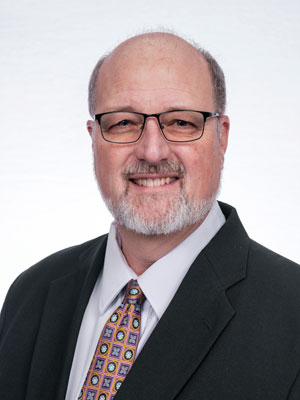
BENNINGTON: Probably the biggest thing I’ve seen in the last decade is that everything keeps getting bigger. When I started back in the ‘90s, it was pretty common to sell 8-ft. x 30- or 32-ft. tanks. Those rarely get sold anymore. They’re all 10-ft. x 40-ft. tanks or 12-ft. x 48-ft. tanks – and multiples of those.
We have a customer in Texas that has four classifying tanks operating together because of the volume of water and tonnage they’re doing. Those are four 12-ft. x 48-ft. tanks. They’re capable of handling over 16,000 gallons per minute of water.
There is also some work being done with diagnostics to not only help you make your product, but it gives you some warning as to when things are starting to wear out. Classifying tanks use solenoids and hydraulic units, so it can let you know when the solenoid is starting to wear out and needs to be replaced. Or when the oil viscosity is getting too high or needs to be changed or cleaned. That diagnostic element is something we’ve been hearing a lot about.
Being able to let producers know when things are going to go wrong before they do [is key] so they can get a jump on it and minimize downtime.
P&Q: What is driving this trend toward bigger equipment?
BENNINGTON: A lot of metro areas don’t have any deposits close to the city, so material has to be trucked or train-loaded in from farther away. So, what you’re seeing is a concentration of production.
Our customer in Texas is probably an hour or an hour and a half away from Dallas, but they have a decent deposit. So, if you have the material, you’re going to make as much of it as you can, as fast as you can.
Also, in the last few years, we got the new road bill, and I think that obviously helped. There are a lot more projects being done because of that.
P&Q: What have you been hearing from customers lately in terms of what they want from their washing and classifying equipment?
BENNINGTON: They want it so they don’t have to pay much attention to it. They want it to do its job.
As plants have gotten bigger and as products have gotten harder to make, plants have gotten a good deal more complicated. Some plants are going all the way down to quaternary crushing and they have a dozen screens in them. The washing equipment and all these pieces have to go together and do their job.
When one machine upstream can mess the whole plant up, they want them to be reliable. They want them to tell them when they’re going to have a problem, and they want to be able to turn it on and let it do its job. Everybody still wants the biggest bang for their buck, but they also want reliability and information.
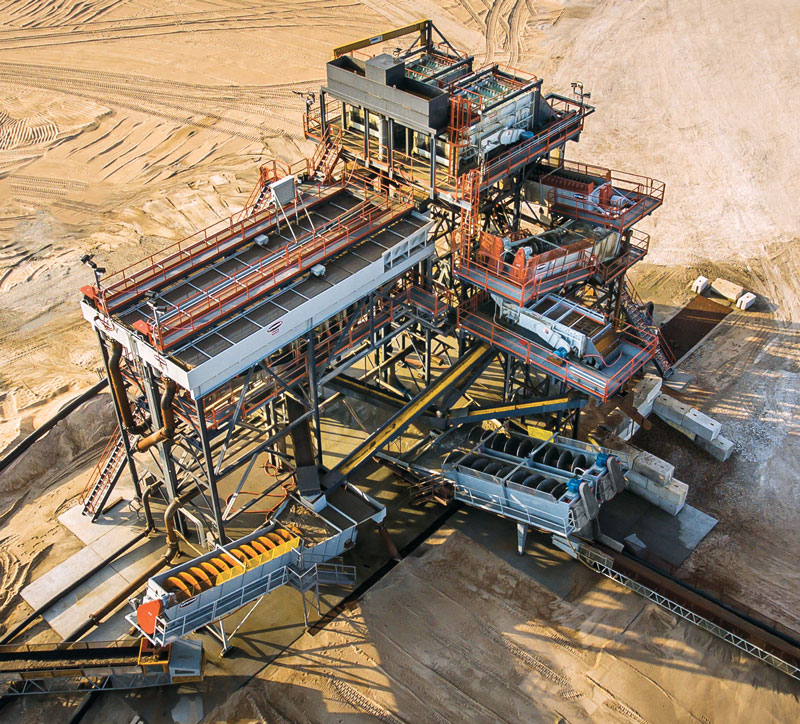
P&Q: Autonomy is something the industry is seeing more of lately – specifically in haul trucks. Is autonomy on the horizon for washing?
BENNINGTON: I think we’re pretty much already there.
Years ago, I was asked what the biggest problem was with washing equipment. It wasn’t specifically a problem with the equipment, but I said when I go to visit a customer, one thing I like to do is go up to the top of the classifying tank. I can see the whole plant and get a better feel for the way things are going.
A lot of times, I’ll go up on top of the tank and the only footprints in the dust are mine.
P&Q: What role is portability or modularity playing in the current design and development of wash plants?
BENNINGTON: There is always a market for portables. There are parts of the country that like portability, but it’s a different animal with washing equipment.
No matter how portable the equipment is, there’s no way to make a pond portable, and you have to have wastewater handling with washing equipment. It’s always a compromise. While you do see portables, what you see more of today is modularity.
A lot of times, customers want to be able to go into relatively small spaces, put in a fairly inexpensive setup and, if they need to move it, it’s not six months of work.
The other thing you run into a lot is that they’re often expandable. It’s plug and play. You want a screen and a screw to start with? OK, here’s your feeder, your screen, your screw and a couple of conveyors for stacking.
Well, five years later, you get more rock in your product, or you need to make a different product. So, you add a crusher to it. A year after that, you [may] need to add a second screen.
Related: Inside Gila River Sand & Gravel’s massive wash plant

